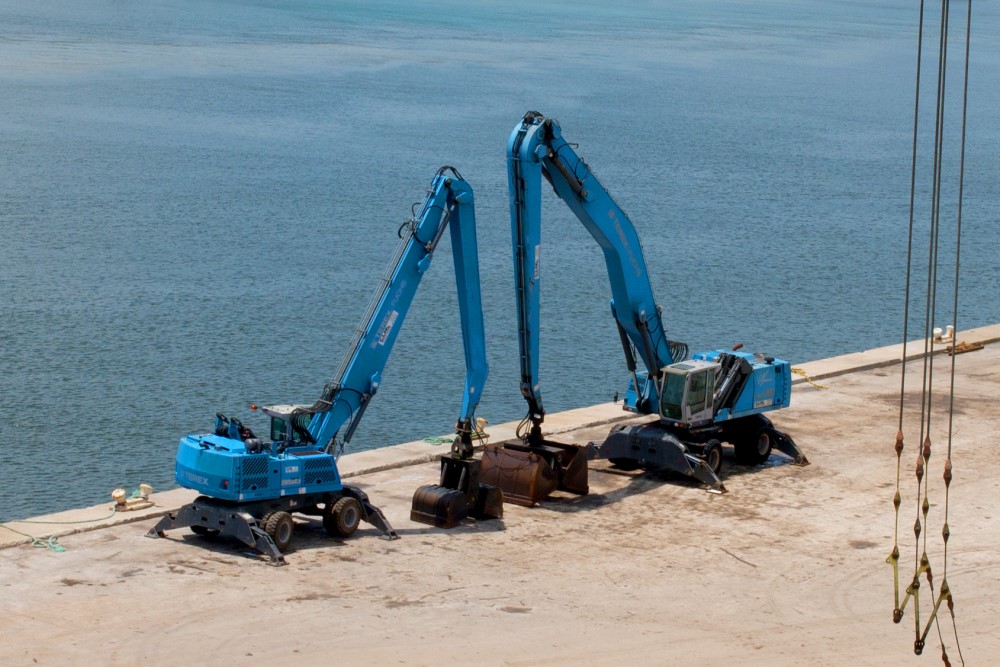At the most basic level, transloading involves the transfer of a commodity or product from one vehicle to another over the course of its transportation move. Almost any commodity or product can benefit from transloading depending on the supply chain requirements and objectives of the shipper. Since transloading has such a wide array of applications, the facilities and equipment necessary to facilitate transloading can vary greatly.
However, two high-level questions can be asked right away in order to determine the type of facility and equipment required.
Bulk commodity? Is the commodity or product being shipped in a bulk form, or is the shipment a non-bulk commodity or product moving in some sort of "packaged" form?
Storage required? Can the commodity or product be transloaded directly from vehicle to vehicle, or will the commodity or product require any amount of storage during its move? If storage is required, what is the likely duration?
In transloading, products require special loading/unloading equipment and techniques. Much of the specialized equipment needed can be found at transloading facilities, all designed to make the transloading process as efficient as possible. Because product is moved from one vessel to another, transloading inherently carries the risk of losing or damaging the product, which is why it is so important to use specialized equipment. The physical act of transferring product from one vessel to another depends on the type of product and is completed using forklifts, cranes, or pumps. A forklift might be used for products transferred on pallets. Heavier items, such as those made of steel, will require stronger equipment in the form of cranes. Liquid commodities will need pumps to transfer the product from one piece of equipment to another.
Bulk commodities requiring direct vehicle-to vehicle transloading, rail-to-truck most likely, will generally use a purpose-built bulk transfer facility. These facilities are essentially large rail yards with truck lanes between the tracks that allow truck access to the railcars. But this situation generally does not offer on-site storage, which for bulk commodities would require specialized, commodity-specific storage silos or tanks. However, many shippers use the railcar itself for commodity storage purposes at a transload facility. The basic types of material handling equipment used at bulk transfer facility are:
Conveyor: Conveyors are slid under railcars during unloading. These are specialized, often portable, machines that are designed to eliminate, or at least minimize, spillage of product. Typically, conveyors are used in transferring products in and out of hopper cars. Product flows out of the hopper via the conveyor.
Pump: Pumps are attached to unloading gates or valves on the bottom of a railcar to allow product to flow out without contamination. This method of transfer is also used for liquid products. There is a large variety of pumps, all with different specifications.
Bulk transfer facilities can be stand-alone sites or a part of a larger rail logistics facility, such as a logistics part or a port complex, that offers additional services such as storage, cleaning, or repair. There are different types of warehouses at a facility designed to load/unload and/or store product.
Non-bulk shipments requiring transloading will most likely utilize a warehouse or cross-dock facility. Important machinery used in transferring non-bulk loads include:
Forklift: Used primarily for the movement of pallets, forklifts work by lifting product from the bottom. Forklifts are easily maneuverable and ideal for usage within a warehouse.
Crane: Cranes are large simple machines that are capable of moving very heavy loads by picking them up from the top. One advantage of a crane is that it can transfer loads much heavier than a forklift can. It is also able to reach greater heights than a forklift; however, it is much more expensive and more difficult to maneuver. Extremely heavy objects, such as over-sized steel commodities, are transferred using cranes.
Upon being removed from the original vessel, non-bulk shipments are stored in secure warehouses. The product may continue its journey immediately, or it may remain in storage until the shipper needs to move it.

